Discover Norway’s Lofoten Islands: scenic views, local flavours and fishing traditions
This Scandinavian stalwart of cruising has revamped its ship Trollfjord and unveiled new voyages that allow guests to linger longer.
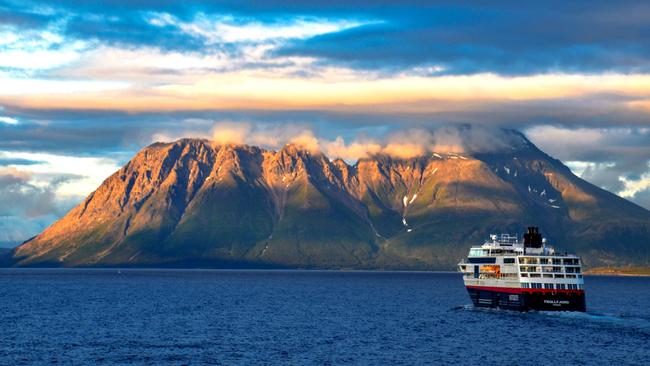
To get from A to B, you must first get to A, and there it is, right outside the porthole, gleaming in the pre-breakfast sun. The village of A is our first sighting of Norway’s legendary Lofoten Islands.
It means “small river” in Old Norse and was originally spelt “Aa” until filleted by language reform in the proud new nation a century ago. Its name reflects its size but more telling is the pronunciation of “or”. Or, more appropriately, “awe”, because the Lofotens are at the peak of a week of wonders voyaging to the top of the inhabited world.
The village can’t handle even our modest cruiser, Hurtigruten’s 500-berth Trollfjord, so we dock further along at Reine, where the tips of a submerged volcanic mountain range frame a sparkling harbour fringed with red rorbuer, traditional fishermen’s huts now serving as boathouses and tourist accommodation.
Pergolas around the shoreline are fish-drying racks, an experience for the nose and eyes, we’re told, had we been here in May, several months earlier.
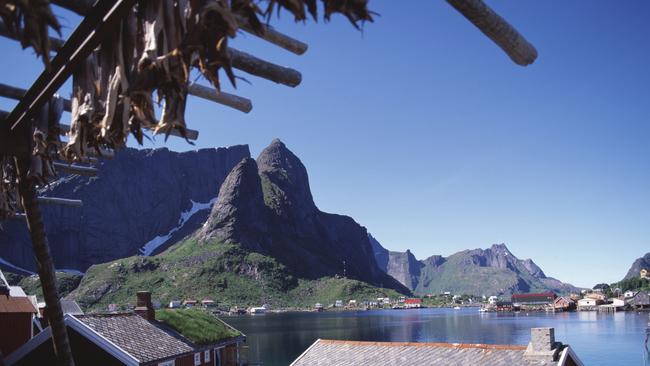
A bus tour of the islands has sold out early, but we’re happy strolling around, stopping often to snap yet another scenic angle before arriving at the postage-stamp islet of Sakrisoy and Anita’s, a cafe and purveyor of the likes of dried monkfish heads (ideal for stock), seafood pet chews and minke whale fillets, a common item in Norwegian shops. We settle for fish burgers on the deck, a snack that does justice to the view.
Fishing in the Lofotens dates back to 425BC, and there are five cod liver oil factories, although we’re assured at one of the ship’s daily presentations on coastal culture that technology has improved the taste.
Crumbed cod tongue is popular, and children as young as five legally work part-time in the factories slicing out the delicacies. The briefing includes a video of the kids at work, including a cheeky lad called Tobias. “Fish doesn’t smell like shit,” quote the subtitles. “It smells like money.” Apparently, these youngsters can earn up to $25,000 a season.
That we can fully absorb Reine’s glory is down to an elevated alternative to Hurtigruten’s classic Coastal Express, a whistlestop service covering 30-plus ports along Europe’s longest national coast.
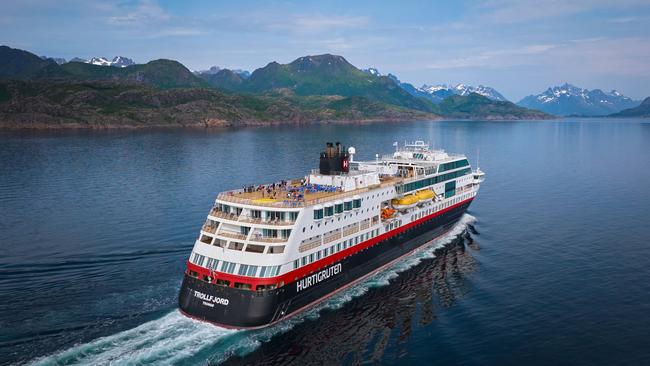
New to the mix are Signature voyages, visiting only seven to nine ports for an average five hours at a time. On the Svalbard Line North itinerary, from Bergen, we get five stops plus a two-night ocean crossing to Svalbard, just 1300km short of the North Pole. This route is sailed over eight days north or south or as a 15-day round trip, with different ports on each leg.
The other Signature cruise is the North Cape Line which, operating in cooler months, eschews Svalbard but gives more chance of a Northern Lights spectacle. All sailings negotiate a mountainous maze of fjords so there’s always something new under the sun, be it midday or midnight.
Signature is also an all-inclusive product, with world wines, craft Norwegian beers and that bracing local spirit aquavit all rolled into the price.
To launch Signature, Hurtigruten updated the 20-year-old Trollfjord, revamping all cabins, restaurants and the panoramic lounge bar.
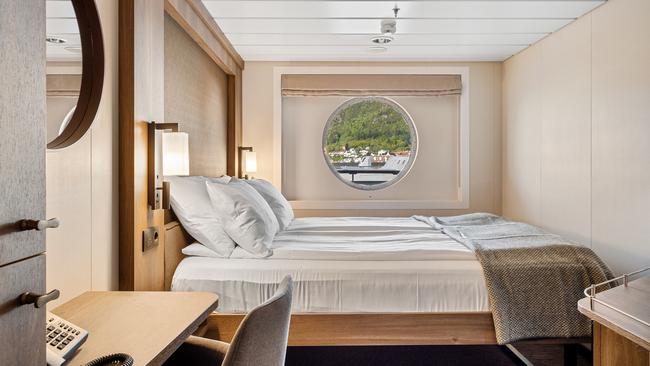
The result is polish without glitz, the walls lined with Norwegian art and glorious photos of the coast. There’s no pool, spa or theatre belting out Broadway afloat, just an excellent pianist tinkling the great American songbook from cocktail hour onwards.
Apart from a cluster of balconied suites, the cabins are cosy, albeit with myriad smart storage solutions. There’s roomier solitude to be found in many quiet corners around the ship, including a lounge where some serious hands of Uno are being played. Its vintage means the ship boasts a cobweb-clearing promenade deck or the chance to sweat it out in the sauna.
Events are held on the open top deck.
That might be crossing the Arctic Circle, the telling of Norse sagas around landmarks we’re passing, or the meeting of another Hurtigruten vessel, for which we’re handed Norwegian flags to wave with gusto.
Meanwhile, Ina, Trollfjord’s excursion leader, calls out across the fjord with a Norwegian coo-ee, a deep “Oo-oo-oo-oo”, her hand across her mouth working like a bellows. “They can hear that,” she says.
While globalisation can make cruising seem rather uniform, the very Norwegian flavour and style of Hurtigruten stands out, particularly at meals.
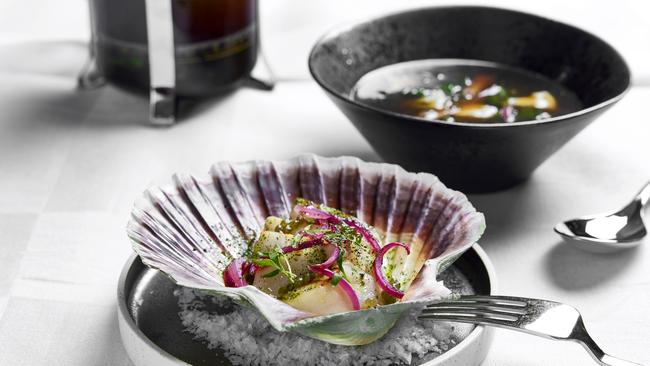
In Flora, the main restaurant, menus provide chapter and verse on selected dishes and ingredients, such as sour steak, the meat being marinated in cultured milk for a week, an old method of preservation. And then there’s veal tenderloin sourced, like most ingredients on Trollfjord, from suppliers along the coast. Now, didn’t Basil Fawlty, faced with poisoning the hotel inspector, desperately “invent” Norwegian veal? As usual, Basil was wide of the mark. It’s real, and it’s spectacular.
Root vegetables are also stellar, the chefs doing wondrous things with parsnip, turnip and beetroot. Turnip pairs beautifully with matjes, salt-marinated herring which, as the menu explains, “is possibly the most important fish in human history; cities have been founded on it, wars fought over it”.
The alternative restaurant is Arran, which celebrates Sami cuisine from the far north. I seek waiter Kristo’s advice on two reindeer options. Should I go for souvas, a souvlaki in a tortilla-like flatbread, or the shank? He declares I could have the shank for breakfast, lunch or dinner, but “the souvas is just for breakfast and lunch”. It’s dinner, therefore the shank, which is tender and a bit gamey. Rather divine, too, are Arctic char, crab cakes and bone marrow amped up with deep-fried capers.
A third restaurant, Rost, is the domain of suite guests, although for a modest surcharge other passengers may be accommodated. The degustation option is a beautifully balanced and very original offering, so we get raw shrimp, baked plaice with trout roe, and deep-fried brie with caramelised cauliflower puree. A crisp waffle with chocolate cream is topped with sugar-pickled cloudberry, another sterling Norwegian ingredient that’s said to guard against scurvy.
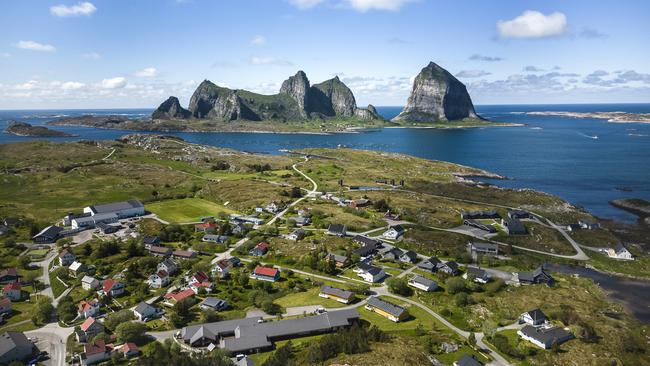
Trollfjord’s other ports of call include the colourful island village of Traena, watched over by conical mountains, where we trudge across the fields to inspect a tiny, elliptically shaped chapel.
Equally distinctive churches are found in Tromso, the far north’s main city, where we arrive on a brilliant summer morning that’s hard to fathom this far north at 69 degrees; at the equivalent southern latitude, we’d be in industrial-strength thermals, spotting penguins.
It’s a gentle stroll around Tromso’s historic centre, comparing the 1861 Domkirke, Norway’s only wooden Protestant cathedral, with its modern equivalent, the triangular Arctic Cathedral across the bridge.
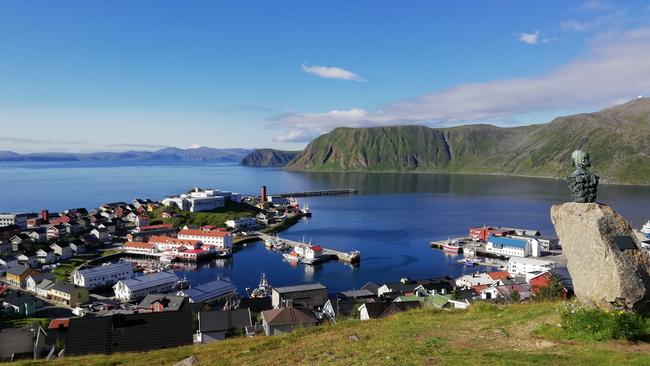
Just below Nordkapp, the northern tip of continental Europe, is Honningsvag, Norway’s smallest city, from where we take the King Crab tour. Our guide Tim stops the inflatable at a buoy to haul up a crab pot in which there’s one young male.
King crabs are from Siberia but the Russians shipped them west to establish a fishing industry around Murmansk, and they spread. These invaders clean the seabed of anything edible, explains Tim. “They’re vicious cannibals.” But silver linings and all that, as king crab is now a valuable resource for the community. “You fish a year’s salary in one week.” We repair to a modern version of a Sami lavvo, a tripod-framed teepee, for a morning tea of coffee and crab shoulders, the prime cut.
The lookout atop Nordkapp is our last sighting of anything for two days, the fog across the Barents Sea not lifting until we steer into Isfjord on Spitsbergen, Svalbard’s only populated island.
On the starboard side is a quirk on Norwegian territory, the Russian coal town of Barentsburg where, behind the grimy mine buildings, sit brightly coloured apartment buildings flanking a mansion that wouldn’t look out of place at a Black Sea resort.
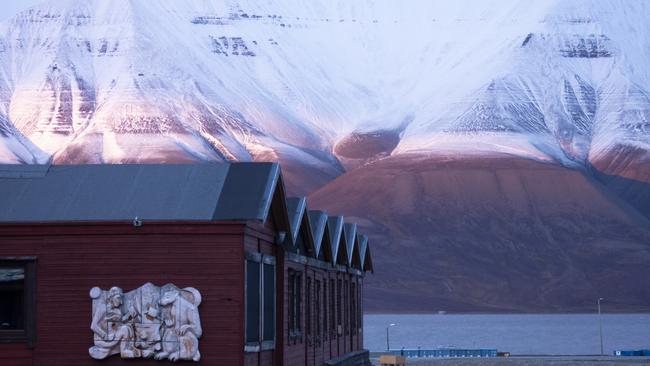
We tie up at Longyearbyen, a town with many global “northernmosts”, including a university, brewery and Thai restaurant.
It’s a place soaked in physical splendour but has its limits.
No one is allowed outside the town unless in a vehicle and/or with a firearm; the polar bear signs denote just where.
In the know
MS Trollfjord sails Signature voyages on the Svalbard Line (Bergen-Longyearbyen) between May and September 2025. Fares for the eight-day North or South itineraries start from $4184 a person, twin share (inside cabins), $7018 (upperdeck outside cabins) and $10,599 (suites). Fares for the 15-day round trip start from $6973 a person, twin share (inside cabins), $11,696 (upperdeck outside) and $17,666 (suites).
Svalbard Line sailings can be bookended with various multi-night Hurtigruten packages. Norway in a Nutshell includes the spectacular Flam Railway trip (Bergen end), while in Svalbard try the likes of a wilderness camp dinner plus a wildlife and glacier cruise, tracking everything from puffins to walrus
and polar bears.
Jeremy Bourke was a guest of Hurtigruten.
If you love to travel, sign up to our free weekly Travel + Luxury newsletterhere.


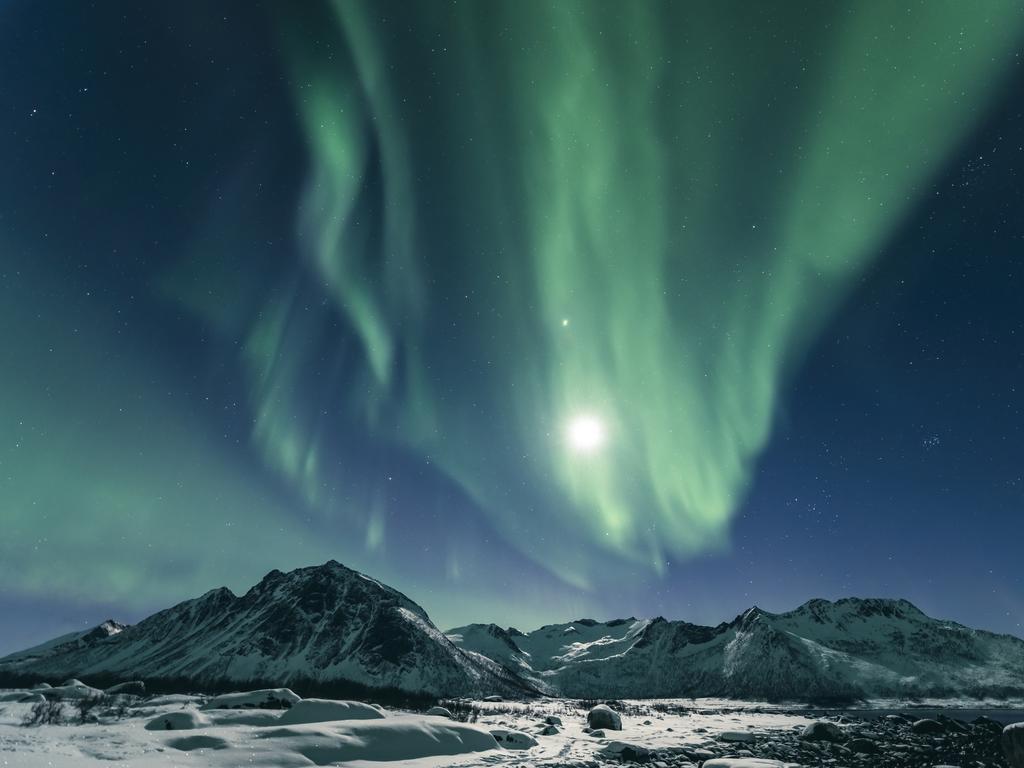
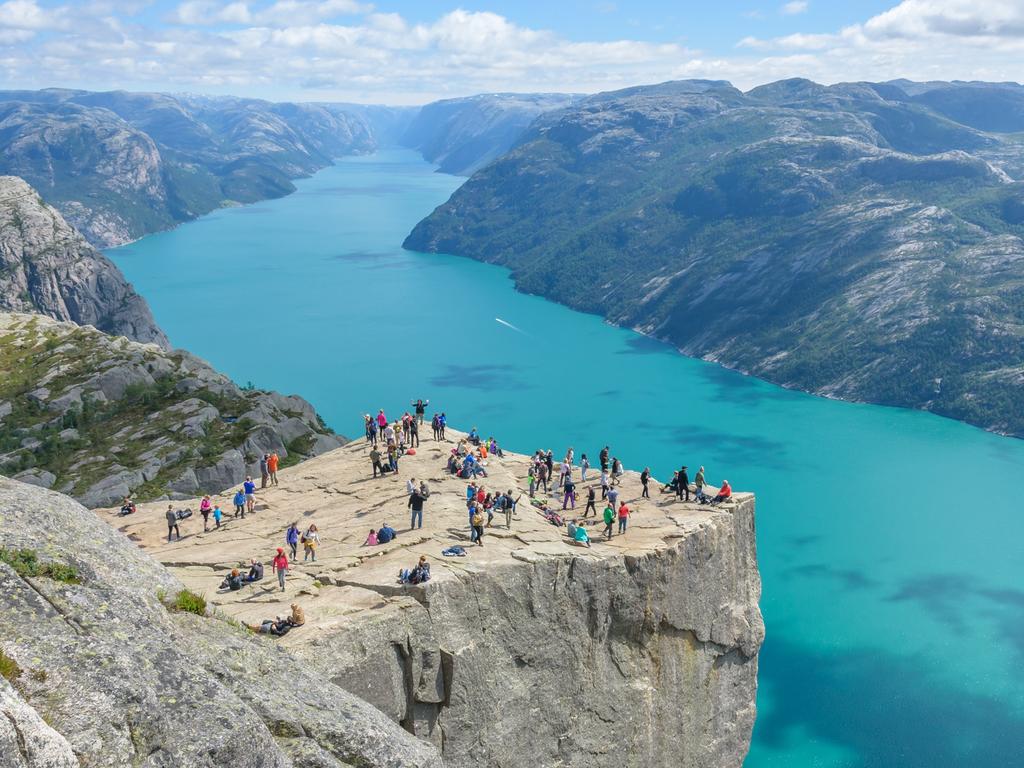
To join the conversation, please log in. Don't have an account? Register
Join the conversation, you are commenting as Logout